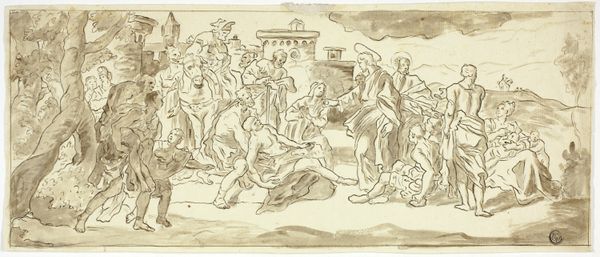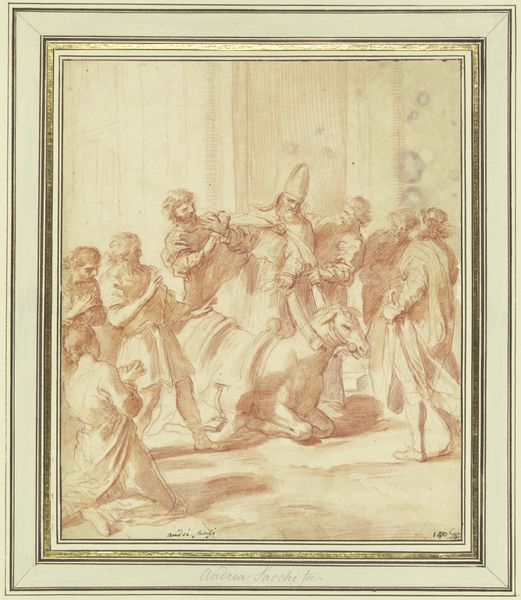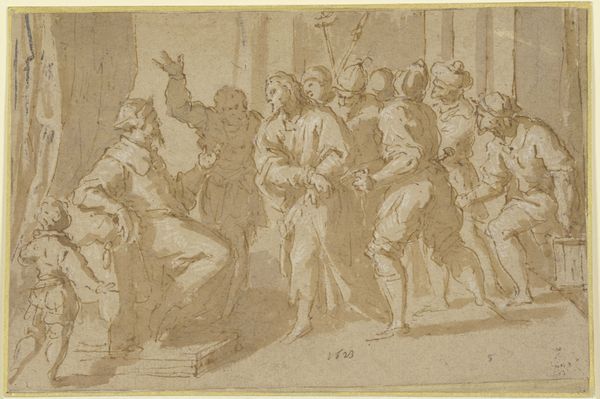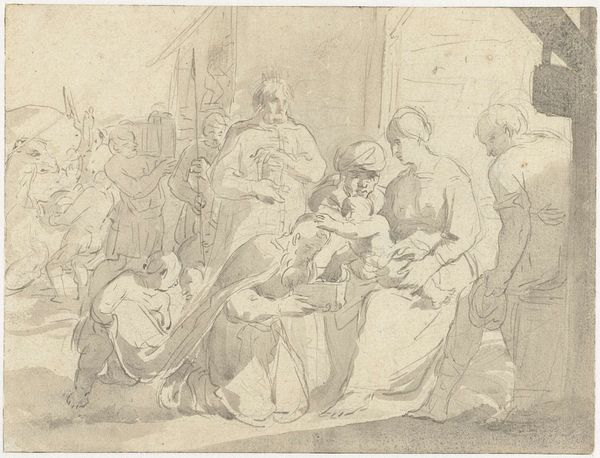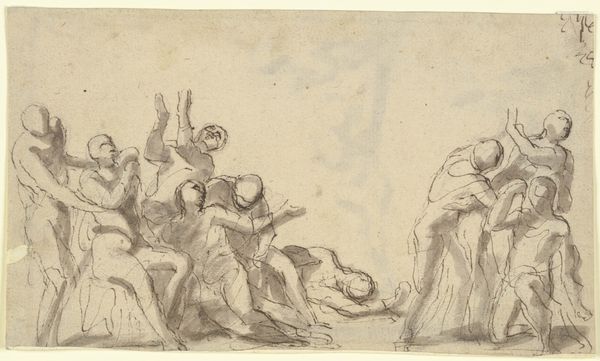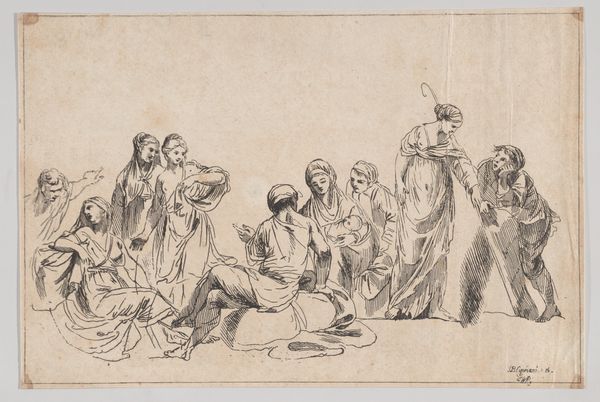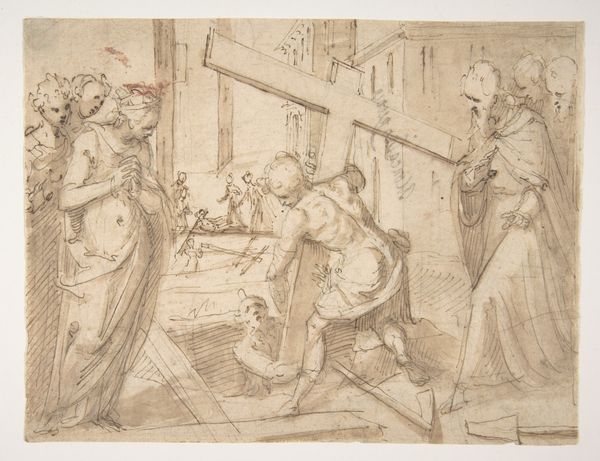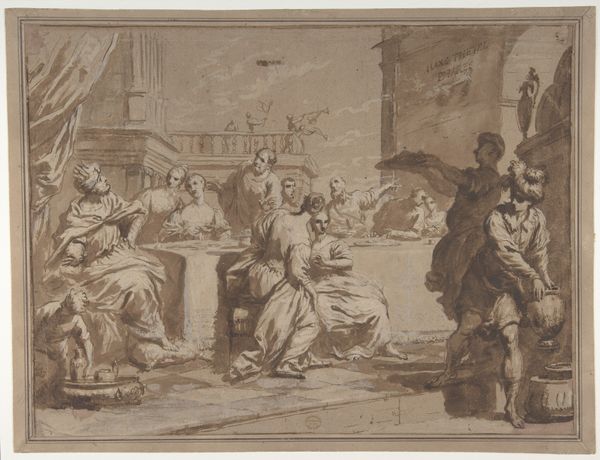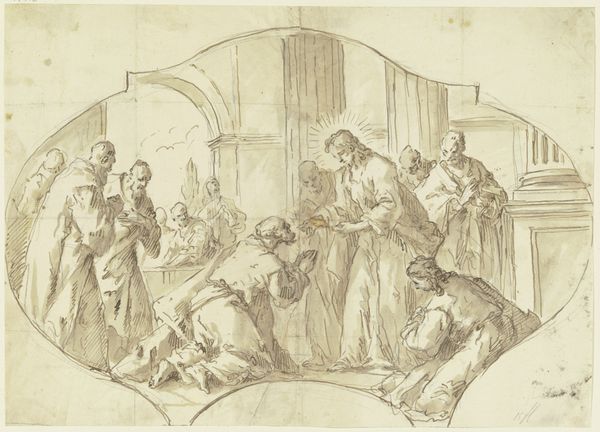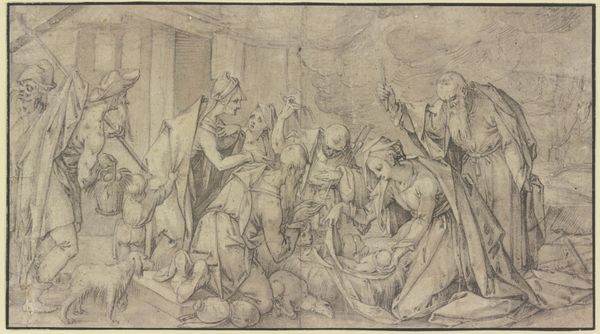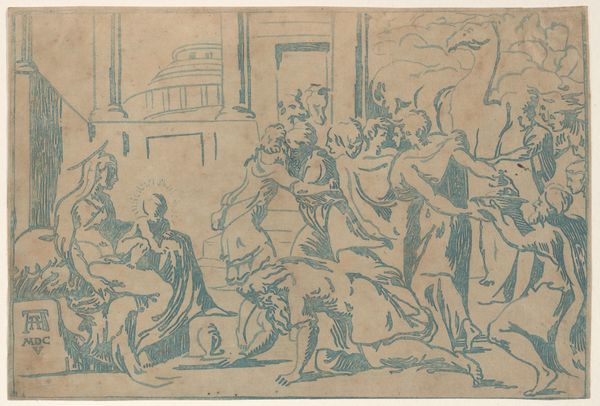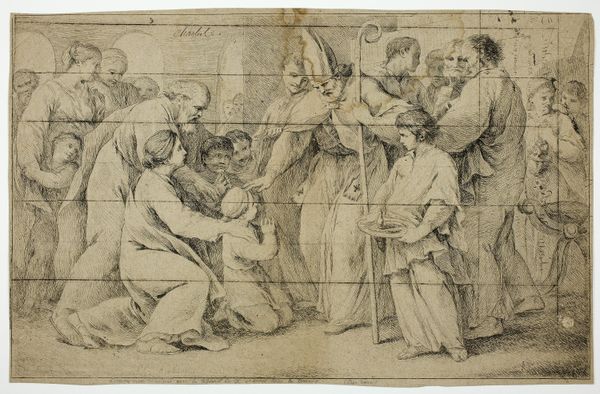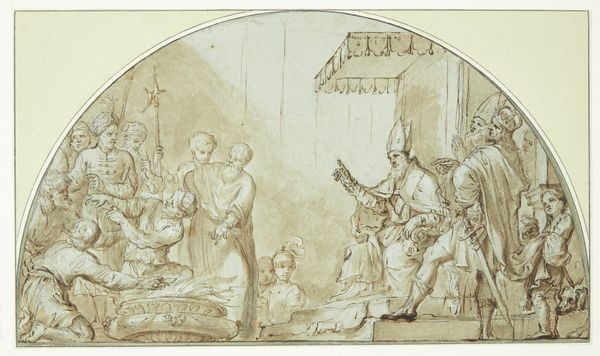
drawing, gouache, ink, chalk
#
drawing
#
baroque
#
gouache
#
etching
#
figuration
#
ink
#
chalk
#
history-painting
#
watercolor
Copyright: Public Domain
Curator: Palma il Giovane created this dynamic piece, "Christus entweicht vor den Pharisäern," around 1623. It's currently held here at the Städel Museum and primarily executed with ink, chalk and gouache on paper. Editor: My immediate response is one of captured motion. Christ seems to float off the page as this collective surges. There is real tension within this seemingly calm, earthy palette. Curator: Palma certainly understood drama, both visually and thematically. In placing this work within the turbulent atmosphere of the 17th century, we cannot disregard how institutional forces would shape religious artistic production and reception. Editor: Exactly. Let's think about how the figures are rendered, and the historical weight behind their actions. Who holds power and how is that performed? The Pharisees, acting on institutional authority, are depicted with wild gesticulation and appear chaotic while the figure of Christ, moving from them, exudes this sense of peace. Is that his choice or is that simply inherent in depictions of his image? Curator: Interesting! Viewing Christ as choosing or performing that passive representation creates new insight into historical agency. One can also see a deliberate contrast. The architectural setting suggests the confines of religious establishment—which highlights his radical escape and the implications of his movement. Editor: This drawing provides an interesting lens to view contemporary power structures that silence, erase, and threaten individuals. Are we following a single leader, or are we contributing to an artistic lineage? Curator: That’s certainly what’s at stake in interpreting artworks such as this one. There’s such potent history in this drawing and simultaneously it can have radical potential if understood within the contemporary. Editor: A vital reminder that even something created centuries ago can still incite powerful and relevant dialogues.
Comments
stadelmuseum about 2 years ago
⋮
These three sheets inv. nos. 4229 Z to 4231 Z are part of a series of drawings executed in 1623. To this day, the extent of the series as well as its function have remained a mystery. Palma focussed chiefly on the figures, reducing the spatial setting to a minimum. On all three sheets, the bodies have been recorded with simple pen strokes which are frequently interrupted but confident nonetheless. The drawings are not likely to have been conceived either as studies for paintings or in preparation for an etching series. What remains is the impression that Palma intended to produce an independent cycle using the drawing medium.
Join the conversation
Join millions of artists and users on Artera today and experience the ultimate creative platform.
